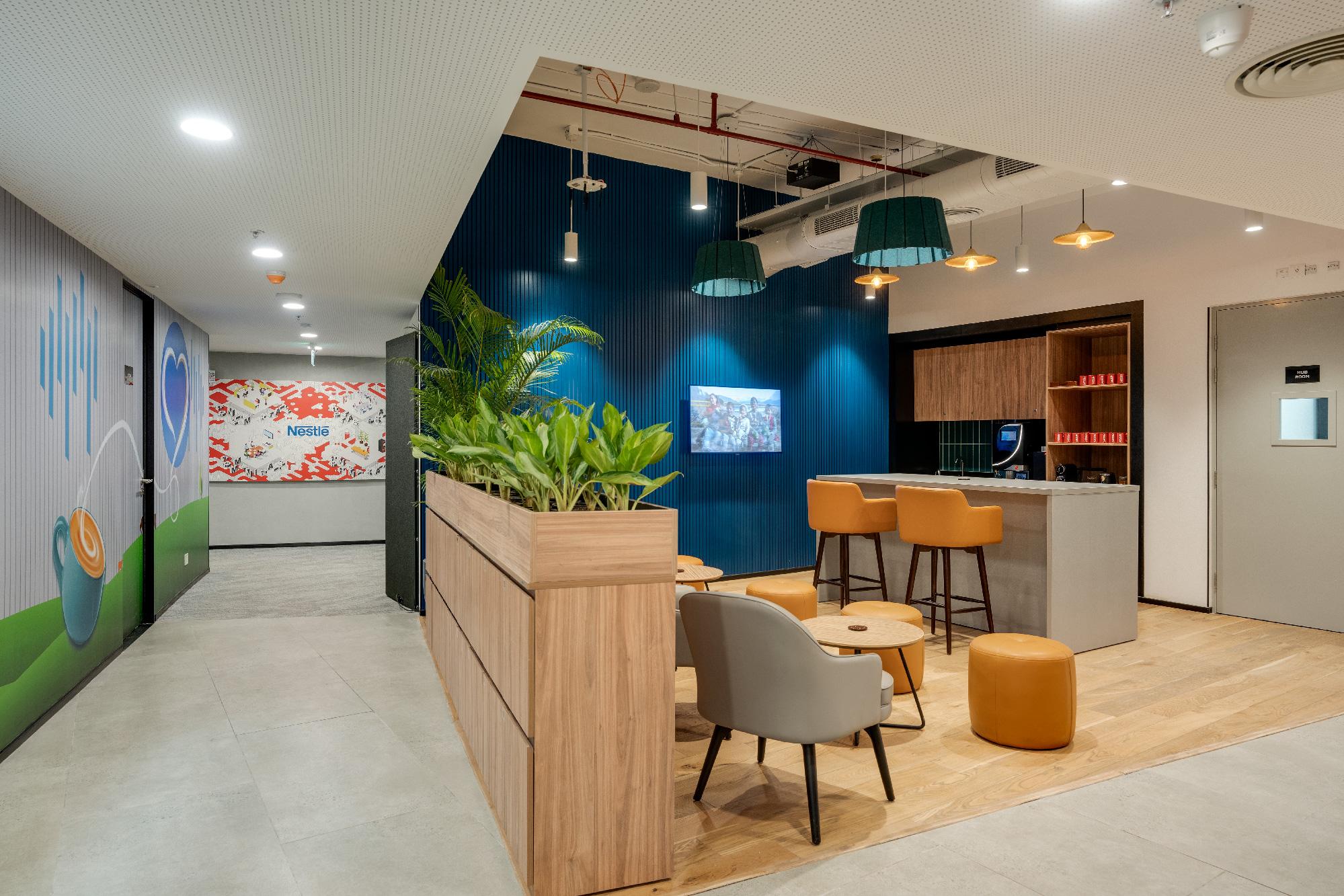
The Growing Importance of Wellness and Well-being in Workplace Culture
Last modified on : 26 september , 2023In today's fast-paced and competitive world, employee well-being has become more crucial than ever. As companies endeavour to attract and retain top talent, they are realising the importance of wellness in the workplace by offering wellness programs and designing workplaces that prioritise employee health and happiness can give them a competitive edge. In this blog, we’ll take a look at examples of office design concepts that embody this philosophy all of which have been designed by the experts at Space Matrix.
Wellness-driven workplace transformation
Organisations are starting to realise that prioritising employee well-being and having a wellness culture in the workplace can give them a competitive edge. The rise of burnout, stress, and mental health issues has led to a greater focus on creating a healthy and supportive work environment. Companies that invest in wellness-driven workplace transformations have reported increased employee productivity, better retention rates, and greater overall organisational success.
However, it's important for organisations to check the pulse of what is needed within their workplace. Every organisation is unique and has different needs and challenges, and thus, there is no one-size-fits-all solution to creating a wellness-driven workplace. It's crucial for organisations to conduct thorough assessments of their workplace culture, employee needs, and overall well-being before implementing any changes.
Space Matrix has undergone an evolutionary transformation by embracing wellness in its workplace and culture. The company's Lab, located in Gurgaon, has played a significant role in testing various elements of its wellness strategy and now serves as an example for other organisations to prioritise their workplace culture and wellness. Lab's workplace design demonstrates the positive impact of prioritising user well-being, from sunlit spaces and natural views to multi-sensory design and specific construction materials. This workplace strategy has greatly enhanced the overall work experience, and the introduction of the wellness program, Wellocity Wave, has led to the restructuring of the company's HR policies, internal engagement programs, and building services management to better cater to employee wellness needs.
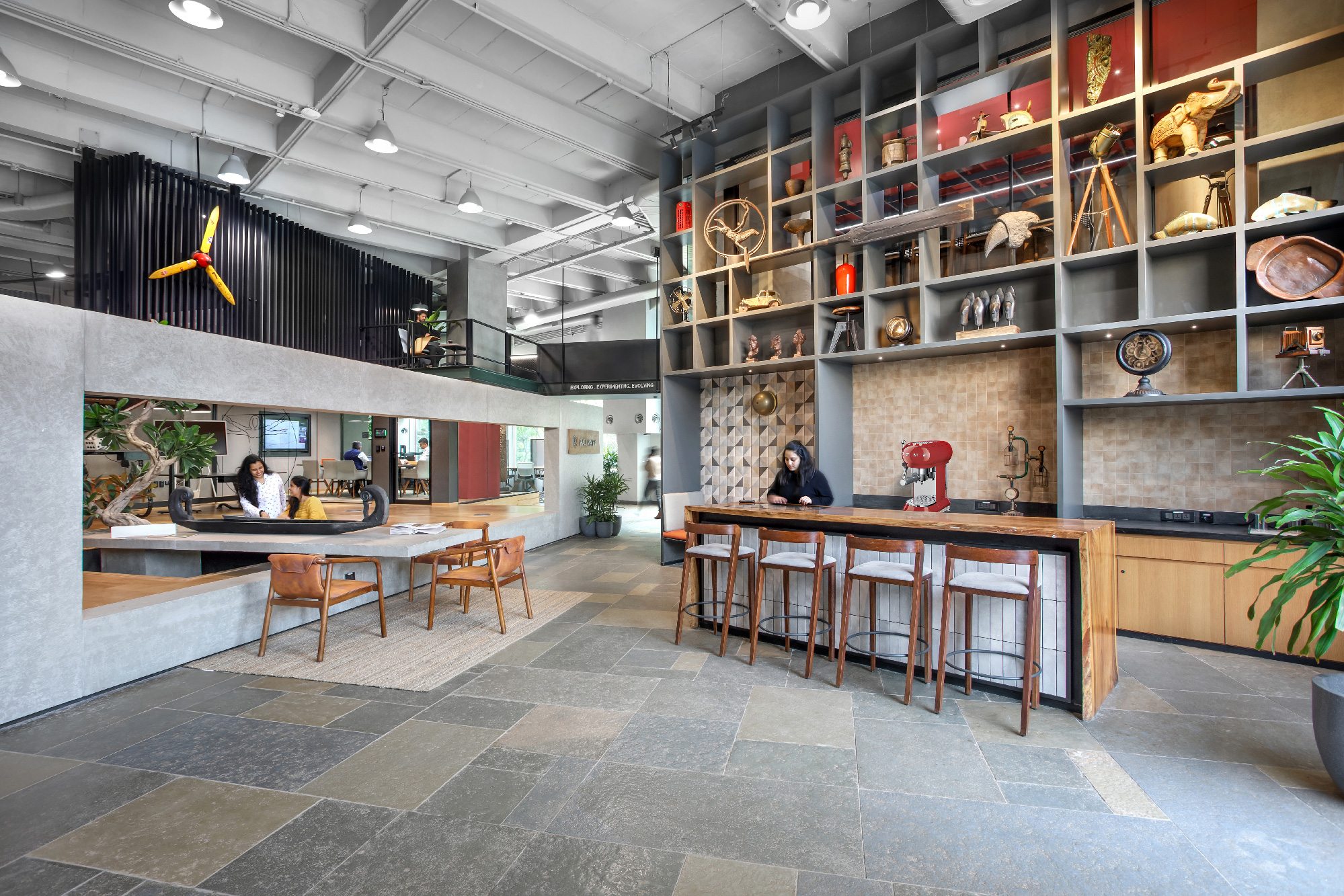
As a result, Lab has become the first design studio in India to receive the WELL v2 pre-certification in the office category and is poised to become the second Well Platinum-certified workplace in India. This, combined with Space Matrix's Great Place to Work® India certification, puts the company in a favourable position to promote tried-and-tested wellness-driven solutions to its clients.
Designing for Wellness in the Workplace
With more organisations realising the importance of health and wellness in the workplace, Designers are now prioritising human needs, including physical, social, and emotional health when creating workplace environments. One approach taken by organisations in this regard is providing nap rooms or sleep pods for employees to rest and recharge during the workday. Studies have shown that short naps can improve alertness, productivity, and overall well-being.
Another approach includes cafeterias and break rooms stocked with healthy food options and information on portion sizes and calorie counts. Organisations are also installing monitors that provide nutritional information and calorific values of food available in the cafeteria. Thus allowing employees to make informed decisions about their food choices.
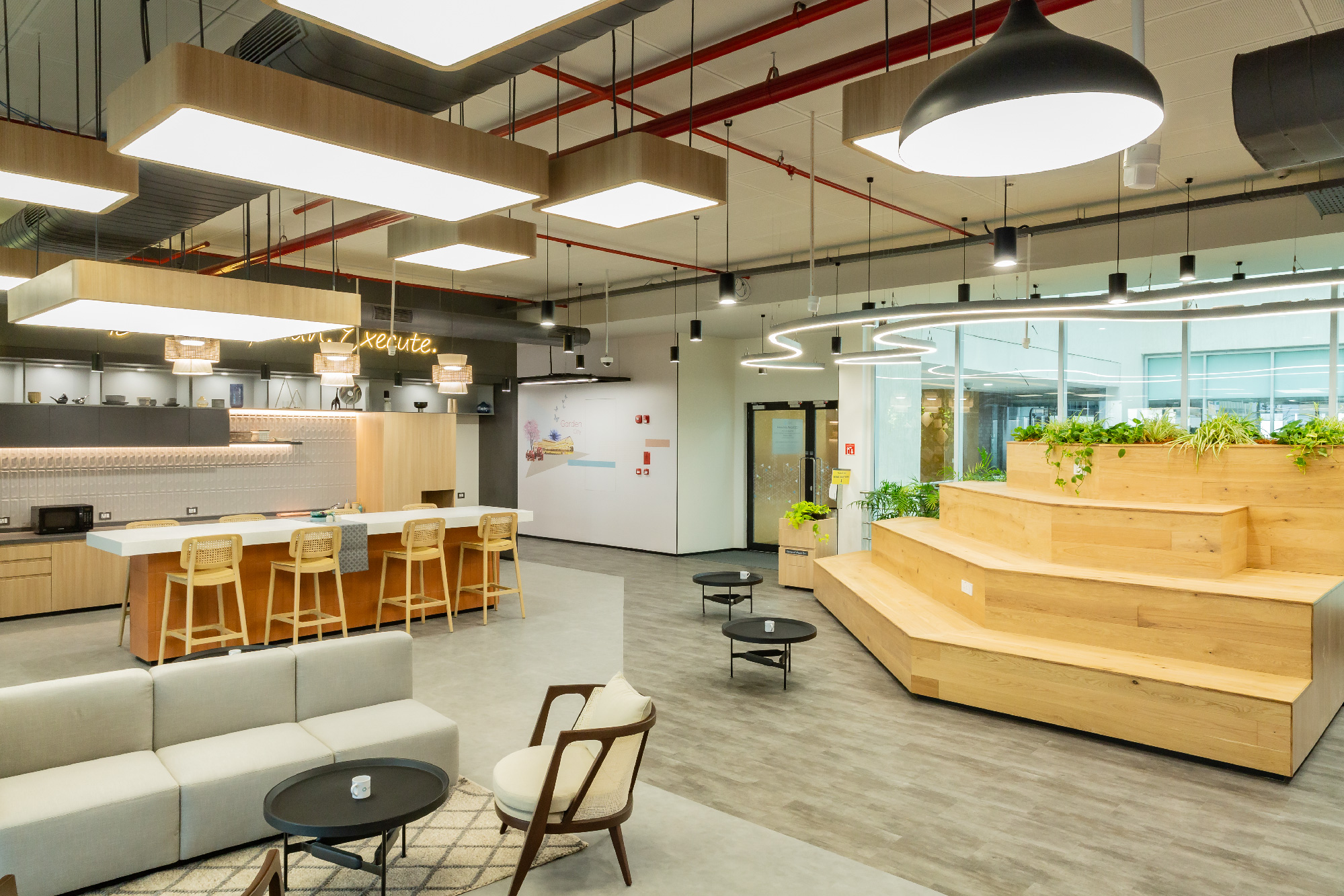
Space Matrix has designed a workspace for Rubrik Bangalore that prioritises both sustainability and wellness. The workspace is not only LEED-certified, but also aligns with the WELL framework, ensuring that indoor air quality, lighting, materiality, and even the food served in the pantry all contribute to employee well-being. Additionally, the ergonomically designed workstations and chairs, visible staircases leading up to a sun-bathed indoor atrium and prominent signages, also add to the wellness aspect. Every facet of the workspace has been carefully considered with employee wellness in mind.
The Impact of Wellness on Workplace Culture and Productivity
There is a direct connection between workplace culture and wellness. A happy and healthy workforce is more productive, engaged, and creative. In addition, companies that prioritise employee well-being tend to attract and retain top talent, leading to a competitive advantage.
Workplace culture plays a vital role in promoting wellness. By creating a culture of health and wellness, companies can encourage employees to adopt healthy habits and behaviours. Workplace design can also support cultural change by incorporating spaces that promote wellness, such as yoga and meditation rooms, fitness centres, and green spaces.
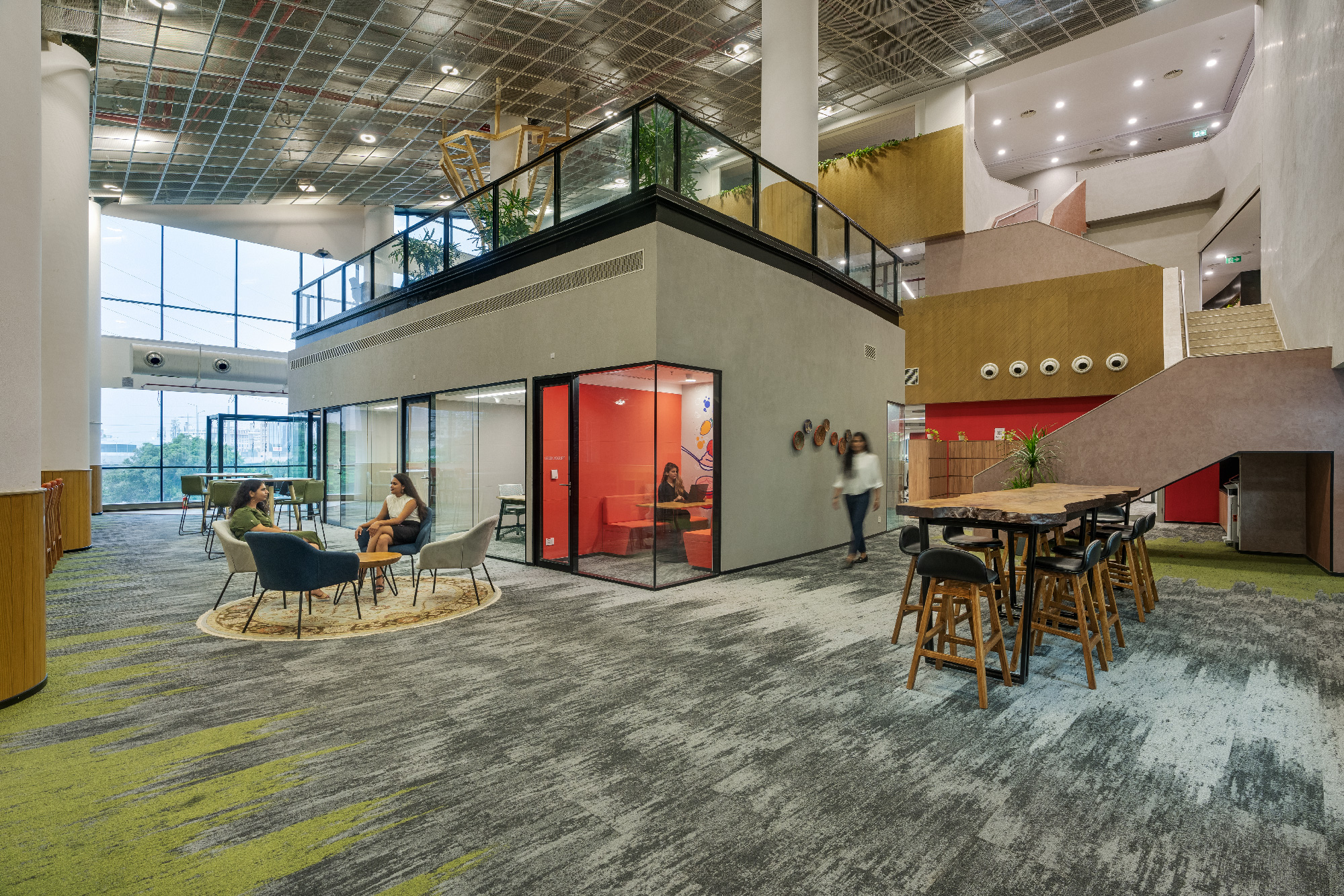
Nestle places a high value on employee well-being and demonstrates this commitment with an office interior that celebrates biophilia and encourages activity-based work. Sunlight and natural elements are incorporated into the design to create a workspace that blurs the lines between inside and outside, promoting mindfulness and overall wellness.
The Nestle workplace also includes a recreation room that features a simulated cricket pitch, step seating for cheerleading, and various physical gaming options, all aimed at promoting employee well-being through recreation and refreshment. Drinking stations are also strategically placed at the entry and exit points to encourage hydration. Additionally, a business garden serves as a Town Hall for collaboration, complete with nature-inspired elements that create a serene atmosphere. The garden offers a range of iconic furniture options, providing maximum freedom of interaction and comfort while working.
Navigating the Challenges of Designing Workplaces for Wellness
Designing workplaces for wellness comes with its own set of challenges. Companies must consider factors such as budget, geographical conditions, weather and employee preferences when creating wellness-focused designs.
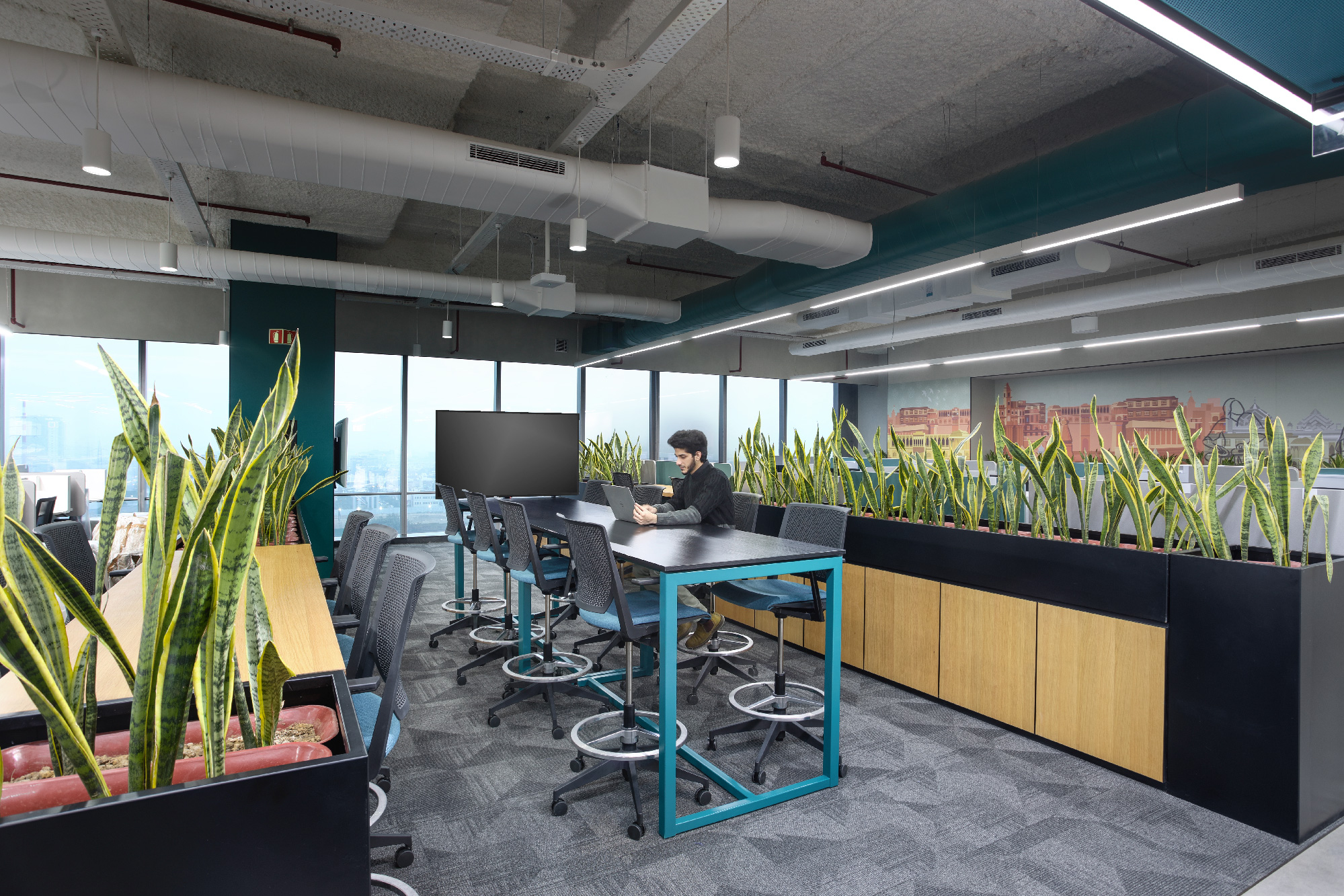
In response to the seasonal variations in outdoor air quality levels in Gurgaon and the need for superior air filtration systems brought on by the pandemic, Space Matrix has installed RESET® certified centralised and decentralised air purification systems and IAQ monitors in Gartner’s office space to provide a real-time view of indoor air performance. Additionally, biophilic elements like planters and green walls have been introduced to mimic the outdoors and improve air quality, reduce stress, and increase productivity levels. Other wellness and well-being-focused elements of this LEED and WELL-certified office interior include reconfigurable workstations and ergonomic chairs, treadmill desks, use of natural light in the workplace designs, recreational zones like gaming rooms and amenity-rich mother’s rooms for maternity breaks.
By designing workplaces that prioritise employee health and happiness, companies can attract and retain top talent, boost productivity, and improve organisational success. Designing for wellness comes with its own set of challenges, but by partnering with an experienced workplace design firm, companies can create successful wellness-focused designs. Are employee health and wellness priorities for your organisation as well? Our experts at Space Matrix can work with you to understand the needs of your employees to deliver an end-solution that is sure to impress the workforce and stakeholders alike. Contact us today!
